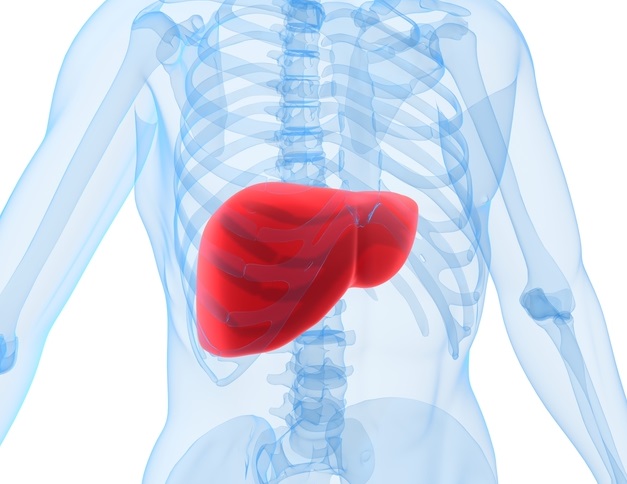
by Bianca Garilli, ND
Non-alcoholic fatty liver disease (NAFLD), characterized by fat accumulation in the liver not caused by alcohol consumption, affects up to 25% of people in the US.1 This is typically a silent disease, often not producing symptoms until its later stages when there is chronic liver injury; complaints can include fatigue, weakness, weight loss, loss of appetite, nausea, abdominal pain, jaundice, itching, edema and sometimes mental confusion.1
NAFLD is most commonly diagnosed in overweight and obese individuals, particularly those with metabolic syndromes including type 2 diabetes (T2D) and dyslipidemia. NAFLD can also affect people without these cardiometabolic risk factors. A simple liver enzyme panel screen can alert a practitioner to the need for a deeper dive into diagnostic procedures such as an ultrasound, which is used to confirm the NAFLD diagnosis.1
The standard treatment for a positive diagnosis of NAFLD is lifestyle modification. Healthcare practitioners recommend eating a healthy diet, exercising regularly, maintaining a healthy weight, avoiding alcohol, and balancing blood lipids and blood glucose levels. These lifestyle modifications can be extremely beneficial in the therapeutic approach to NAFLD management.1
Unfortunately, there are many individuals who are either unwilling or unable, for various reasons, to engage in a full lifestyle overhaul. In this case, supporting small and sustainable changes to lifestyle can still yield important improvements, but additional therapeutics are often still necessary to address the detrimental chronic presence of NAFLD. The tripeptide glutathione, γ-L-glutamyl-L-cysteinyl-glycine, has come to the forefront as a nutritional bioactive with potential use in the management of NAFLD, as it plays a critical role in cellular antioxidant and detoxification systems. For years intravenous glutathione injections have been clinically recognized for their therapeutic value in treating acute poisoning and chronic liver disease. More recently oral glutathione has been investigated for its use in the treatment of NAFLD.
Glutathione is an antioxidant that can be found in various plants including asparagus, avocado, spinach, okra, broccoli, cantaloupe, tomatoes, carrots, grapefruit, orange, zucchini, strawberries, watermelon and many other fruits and vegetables. It is also highly concentrated in freshly prepared meats.2,3 Food sources of glutathione, however, comprise only a small amount of the body’s total glutathione levels, since most is endogenously synthesized at the cellular level by the body itself. In this case, the amino acid precursors to glutathione – glutamate, glycine and cysteine – must also be available from the diet in adequate quantities.3
It has been debated for many years whether oral glutathione supplementation translates into increased bioactive levels of glutathione in the body, since many believe that oral glutathione cannot be adequately absorbed and therefore, successfully utilized by the body’s cells. In recent years, however, emerging research has demonstrated that oral glutathione supplementation, particularly in the protein-bound form, may in fact exert a beneficial effect on redox potential in the cells,4-5 leading researchers to consider glutathione supplementation effects in the human body, including in the treatment of NAFLD.
In an open label, single arm and multi-center pilot study, 34 Japanese patients diagnosed with NAFLD (but without hepatic decompensation), with ultrasound, were prospectively evaluated over the course of 7 months; 29 of these individuals completed the study: 14 men and 15 women with a mean age of 56.0 ± 13.3 years).6 For the first 3 months, patients were involved in implementing targeted lifestyle modifications including diet and exercise; this was followed by daily oral administration of 300 mg of L-glutathione for the following 4 months. Participants were clinically evaluated before and after the glutathione treatment with liver fat, fibrosis and alanine aminotransferase (ALT) levels being measured and tested.6
After the 4-month glutathione treatment phase, the following biomarkers significantly decreased:6
- ALT
- Triglycerides
- Non-esterified fatty acids
- Ferritin
When ALT responders were compared to non-responders, researchers discovered that ALT responders were younger and did not have severe diabetes. Overall, these pilot study findings indicate the potential therapeutic liver metabolism and function benefits associated with oral administration of glutathione in individuals with early NAFLD without decompensated cirrhosis.6 Larger clinical trials are warranted to further elucidate these findings.
Why is this Clinically Relevant?
- Patients with overweight, obesity, or metabolic syndrome risk factors such as hyperglycemia and dyslipidemia, should be screened for NAFLD by starting with a liver enzyme panel
- If NAFLD is present, sustainable lifestyle modifications including therapeutic dietary and exercise interventions should be implemented with regular follow up assessments
- Adding nutritional bioactives, such as glutathione, should be considered
- American Liver Foundation. NAFLD. http://www.liverfoundation.org/abouttheliver/info/nafld/. Accessed November 16, 2017.
- Immune Health Sciences. Table prepared from various references. http://www.immunehealthscience.com/glutathione-foods.html. Accessed November 27, 2017.
- Jones DP, Coates RJ, Flagg EW, et al. Glutathione in foods listed in the national cancer institute’s health habits and history food frequency questionnaire. Nutr Cancer. 1992;17(1):57-75.
- Kovacs-Nolan J, Rupa P, Matsui T, et al. In vitro and ex vivo uptake of glutathione (GSH) across the intestinal epithelium and fate of oral GSH after in vivo supplementation. J Agric Food Chem. 2014;62:9499–9506.
- Park EY, Shimura N, Konishi T, et al. Increase in the protein-bound form of glutathione in human blood after the oral administration of glutathione. J Agric Food Chem. 2014;62:6183–6189.
- Honda Y, Kessoku T, Sumida Y, et al. Efficacy of glutathione for the treatment of nonalcoholic fatty liver disease: an open-label, single-arm, multicenter, pilot study. BMC Gastroenterol. 2017; Aug 8:17(1):96.



